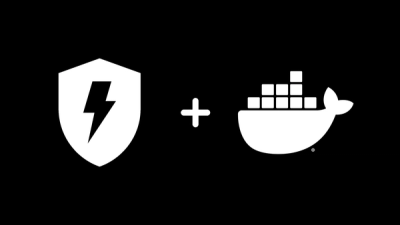

bindata
This package converts any file into managable Go source code. Useful for
embedding binary data into a go program. The file data is optionally gzip
compressed before being converted to a raw byte slice.
It comes with a command line tool in the go-bindata sub directory.
This tool offers a set of command line options, used to customize the
output being generated.
Installation
To install the library and command line program, use the following:
go get -u github.com/shuLhan/go-bindata/...
Usage
Conversion is done on one or more sets of files. They are all embedded in a new
Go source file, along with a table of contents and an Asset function,
which allows quick access to the asset, based on its name.
The simplest invocation generates a bindata.go file in the current
working directory. It includes all assets from the data directory.
$ go-bindata data/
To include all input sub-directories recursively, use the elipsis postfix
as defined for Go import paths. Otherwise it will only consider assets in the
input directory itself.
$ go-bindata data/...
To specify the name of the output file being generated, we use the following:
$ go-bindata -o myfile.go data/
Multiple input directories can be specified if necessary.
$ go-bindata dir1/... /path/to/dir2/... dir3
The following paragraphs detail some of the command line options which can be
supplied to go-bindata. Refer to the testdata/out directory for various
output examples from the assets in testdata/in. Each example uses different
command line options.
To ignore files, pass in regexes using -ignore, for example:
$ go-bindata -ignore=\\.gitignore data/...
Accessing an asset
To access asset data, we use the Asset(string) ([]byte, error) function which
is included in the generated output.
data, err := Asset("pub/style/foo.css")
if err != nil {
// Asset was not found.
}
// use asset data
Debug vs Release builds
When invoking the program with the -debug flag, the generated code does
not actually include the asset data. Instead, it generates function stubs
which load the data from the original file on disk. The asset API remains
identical between debug and release builds, so your code will not have to
change.
This is useful during development when you expect the assets to change often.
The host application using these assets uses the same API in both cases and
will not have to care where the actual data comes from.
An example is a Go webserver with some embedded, static web content like
HTML, JS and CSS files. While developing it, you do not want to rebuild the
whole server and restart it every time you make a change to a bit of
javascript. You just want to build and launch the server once. Then just press
refresh in the browser to see those changes. Embedding the assets with the
debug flag allows you to do just that. When you are finished developing and
ready for deployment, just re-invoke go-bindata without the -debug flag.
It will now embed the latest version of the assets.
Using the -nomemcopy flag, will alter the way the output file is generated.
It will employ a hack that allows us to read the file data directly from
the compiled program's .rodata section. This ensures that when we
call our generated function, we omit unnecessary memcopies.
The downside of this, is that it requires dependencies on the reflect and
unsafe packages. These may be restricted on platforms like AppEngine and
thus prevent you from using this mode.
Another disadvantage is that the byte slice we create, is strictly read-only.
For most use-cases this is not a problem, but if you ever try to alter the
returned byte slice, a runtime panic is thrown. Use this mode only on target
platforms where memory constraints are an issue.
The default behaviour is to use the old code generation method. This
prevents the two previously mentioned issues, but will employ at least one
extra memcopy and thus increase memory requirements.
For instance, consider the following two examples:
This would be the default mode, using an extra memcopy but gives a safe
implementation without dependencies on reflect and unsafe:
func myfile() []byte {
return []byte{0x89, 0x50, 0x4e, 0x47, 0x0d, 0x0a, 0x1a}
}
Here is the same functionality, but uses the .rodata hack.
The byte slice returned from this example can not be written to without
generating a runtime error.
var _myfile = "\x89\x50\x4e\x47\x0d\x0a\x1a"
func myfile() []byte {
var empty [0]byte
sx := (*reflect.StringHeader)(unsafe.Pointer(&_myfile))
b := empty[:]
bx := (*reflect.SliceHeader)(unsafe.Pointer(&b))
bx.Data = sx.Data
bx.Len = len(_myfile)
bx.Cap = bx.Len
return b
}
Optional compression
When the -nocompress flag is given, the supplied resource is not GZIP
compressed before being turned into Go code. The data should still be accessed
through a function call, so nothing changes in the usage of the generated file.
This feature is useful if you do not care for compression, or the supplied
resource is already compressed. Doing it again would not add any value and may
even increase the size of the data.
The default behaviour of the program is to use compression.
Path prefix stripping
The keys used in the _bindata map are the same as the input file name passed
to go-bindata. This includes the path. In most cases, this is not desireable,
as it puts potentially sensitive information in your code base. For this
purpose, the tool supplies another command line flag -prefix. This accepts a
regular expression string, which
will be used to match a portion of the map keys and function names that should
be stripped out.
For example, running without the -prefix flag, we get:
$ go-bindata /path/to/templates/
_bindata["/path/to/templates/foo.html"] = path_to_templates_foo_html
Running with the -prefix flag, we get:
$ go-bindata -prefix "/.*/some/" /a/path/to/some/templates/
_bindata["templates/foo.html"] = templates_foo_html
Build tags
With the optional -tags flag, you can specify any go build tags that
must be fulfilled for the output file to be included in a build. This
is useful when including binary data in multiple formats, where the desired
format is specified at build time with the appropriate tags.
The tags are appended to a // +build line in the beginning of the output file
and must follow the build tags syntax specified by the go tool.
Related projects
go-bindata-assetfs -
implements http.FileSystem interface. Allows you to serve assets with
net/http.



